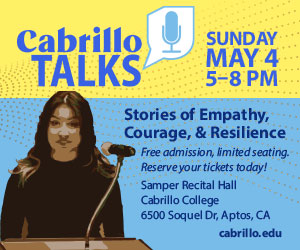 On the night of the Fourth of July, I flew into New Orleans. I watched from above as fireworks sailed from below into the sky to celebrate Independence Day. The young man from a small Louisiana coastal town sitting next to me said “I’ve never seen fireworks from above.” “Me neither.”
On the night of the Fourth of July, I flew into New Orleans. I watched from above as fireworks sailed from below into the sky to celebrate Independence Day. The young man from a small Louisiana coastal town sitting next to me said “I’ve never seen fireworks from above.” “Me neither.”
“I’ve never been on a plane before this either,” he added.
A few hours later I was back in the sky, this time flying above a different kind of fireworks. The kind that mourn our dependence. Our small Cessna traced the coast of Louisiana and Mississippi, documenting the flow of oil and tar balls onto islands, wetlands, mangroves, beaches and the inadequacy of the bright yellow and orange booms floating here and there and more often than not, beachcast and twisted by the wind and waves.
One member of our team a government geologist studying the weathering of oil on seawater. One member of our team a environmental toxicologist. Our pilot, a NASA scientist herself. And myself, a marine biologist in search of sea turtles. Bonny skillfully skirted the edges of thunderclouds and positioned our plane wherever we wanted it.
 Down the oily coast we flew. Timbalier and Cat Islands, Grand Isle, the Mississippi River Delta, Chandeleur Islands. None of these places, and so many others, will be themselves for a long time. Then we turned offshore, for deep water. Beneath us muddy water, oily water, oily muddy water. Then the edge, a giant convergence, between deep blue and shallower oily water for as far as we could see. There we found a school of forty cownose mantas, searching for food, traveling together. Without a doubt they have all eaten oil.
Down the oily coast we flew. Timbalier and Cat Islands, Grand Isle, the Mississippi River Delta, Chandeleur Islands. None of these places, and so many others, will be themselves for a long time. Then we turned offshore, for deep water. Beneath us muddy water, oily water, oily muddy water. Then the edge, a giant convergence, between deep blue and shallower oily water for as far as we could see. There we found a school of forty cownose mantas, searching for food, traveling together. Without a doubt they have all eaten oil.
We flew further offshore. Closer to “ground zero,” the site of the oil gusher and location of the ill-fated Deepwater Horizon.
I’ve spent my adult life working for the ocean, the endangered animals living in it, and the people who depend on it. I’ve seen the wholesale destruction of species by commercial fishing, illegal hunting and the destruction caused by plastic pollution. But none of that prepared me for this.
 Our plane surveyed a path of the thousands of square miles of destroyed ocean habitat. Then we descended a bit and flew over “ground zero”, the site of the ill-fated Deepwater Horizon. A new platform has taken its place. A large flame of burning methane jetting from the side. Ships worked the waters all around. Bands of oil extended off into the distance, set off by the deep blue of the Gulf.
Our plane surveyed a path of the thousands of square miles of destroyed ocean habitat. Then we descended a bit and flew over “ground zero”, the site of the ill-fated Deepwater Horizon. A new platform has taken its place. A large flame of burning methane jetting from the side. Ships worked the waters all around. Bands of oil extended off into the distance, set off by the deep blue of the Gulf.
We were close. So close I could smell it. The cockpit filled with fumes. I breathed in the foul breath of the fire dragon. We buzzed the beast, like a pesky fly. Our small craft banked, circled back around for a closer look. This time I held my breath.
I thought of the tragic loss of human lives that occurred just below me ten weeks prior. I thought of the massive loss of animal life that’s already happened and will unfold throughout this ocean for years to come. I thought of the distraught fisherman who took his own life. I thought of the people below, working to stop the flow of oil, working to burn the oil on the surface. I thought about my daughters. I thought ten million other things at the same time. I felt like I was going to cry. Somehow I didn’t, but I raged inside silently.
Eventually, I could hold my breath no longer and I sucked in the breath of the fire dragon again.
I will think of the Deepwater Horizon every time I smell that smell. Every time I pump gas into my tank, or ride my bike behind a truck on a busy street. At airports and bus stops. At BP, Exxon, or Chevron stations. It will keep me going in this ocean revolution, our collective effort to slay the dragon.
(Wallace “J.” Nichols, PhD is a Research Associate at the California Academy of Sciences and Founder/Co-Director of Ocean Revolution—OceanRevolution.org)


















